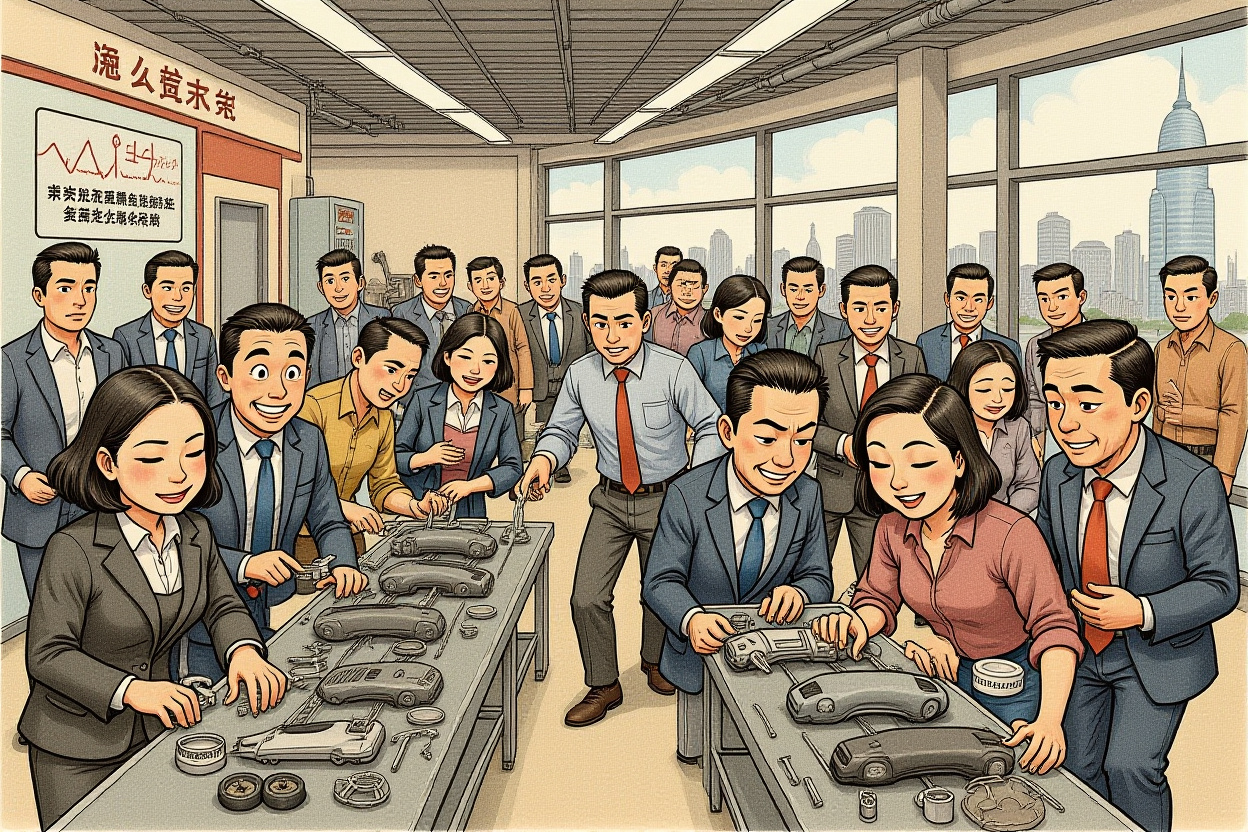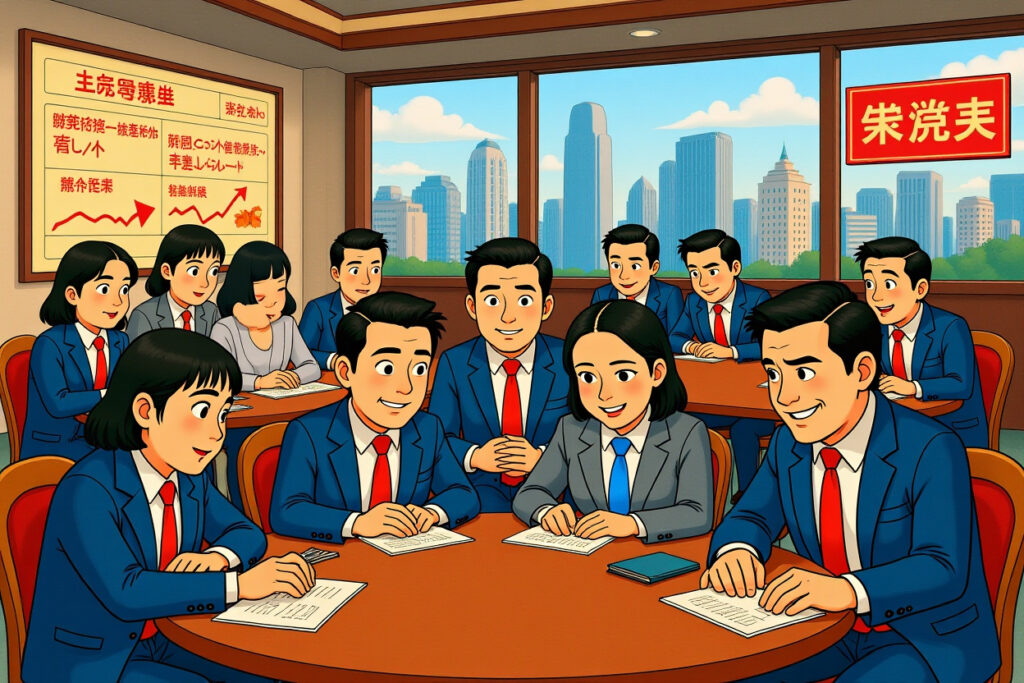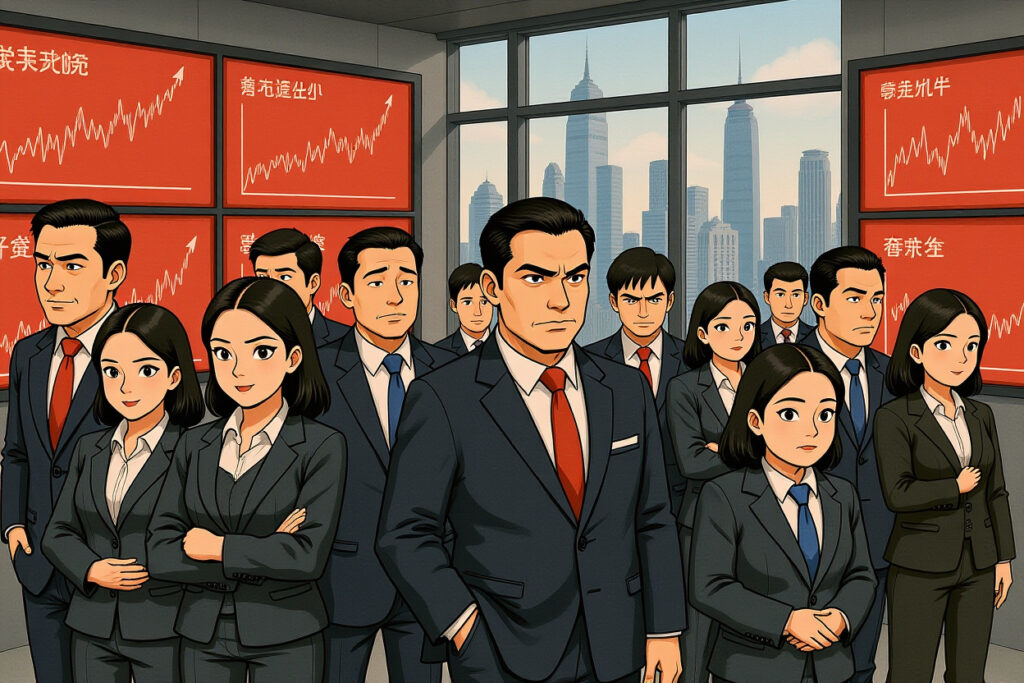– Zunjie mobilizes office staff for production line support to address delivery bottlenecks
– Flagship S800 model achieves 330 deliveries in one week with 1,500 projected for September
– Delivery wait times extend to 14-20 weeks due to overwhelming demand
– The move reflects broader supply chain pressures in China’s competitive EV market
– Zunjie S800 positions as Huawei’s Harmony OS-powered most expensive model at ¥1.018 million
Emergency Mobilization at Zunjie Factory
Automotive blogger Sun Shaojun (孙少军) revealed on September 9th that Jianghuai’s premium electric vehicle brand Zunjie has implemented an emergency measure: mobilizing office staff to support production lines. The company has adopted the rallying cry “Ensuring Supply Means Protecting Our Honor” as it battles to meet overwhelming demand for its flagship S800 model.
This unusual step sees administrative employees from all departments receiving brief but efficient training before being assigned to specific positions on the assembly line. These office staff supporting production lines work under the guidance of production supervisors and experienced mentors, representing a remarkable all-hands-on-deck approach to manufacturing challenges.
Structured Implementation Across Departments
The mobilization follows a carefully structured plan where departments will schedule support shifts in batches based on actual work arrangements. Department heads are coordinating with HR to ensure both regular duties and production support receive adequate attention without compromising either function.
This temporary measure is designed as a phased mission, with the company emphasizing that normal business operations will continue uninterrupted despite the extraordinary circumstances. The office staff supporting production lines initiative demonstrates how seriously Zunjie is taking its delivery commitments to customers.
Zunjie S800 Delivery Performance
According to Sun’s additional disclosures on Weibo, Zunjie delivered 330 S800 vehicles last week, with September projections reaching approximately 1,500 units. This delivery ramp-up comes as the brand struggles to fulfill outstanding orders that have accumulated since the model’s launch.
The S800, which started at ¥708,000 when it debuted on May 30th, has seen particularly strong demand for its top-tier Starry Sky Executive Edition priced from ¥1.018 million. This model currently holds the distinction of being the most expensive vehicle launched under Huawei’s Harmony OS intelligent driving platform.
Growing Backlog and Delivery Timelines
Official statements from Zunjie on August 12th indicated continuing strong pre-sales performance, with customers who placed deposits and confirmed delivery solutions in August facing extended wait times. The extended-range version carries an estimated delivery cycle of 14-18 weeks, while the pure electric variant requires 16-20 weeks for delivery.
This substantial backlog has prompted the drastic measure of office staff supporting production lines, as the company races to accelerate manufacturing output. The delivery bottleneck represents both a challenge and validation of the model’s market acceptance in the competitive luxury EV segment.
Production Ramp-Up at Super Factory
Zunjie’s super factory has been rapidly scaling production capabilities since August, when weekly deliveries first surpassed 200 units. This performance placed the S800 among the leaders in the ¥700,000+ luxury sedan category, a remarkable achievement for a new entrant in this competitive space.
The company anticipated beginning mass deliveries in mid-to-late August, with overall monthly deliveries expected to exceed 1,000 units. The current mobilization of office staff supporting production lines appears designed to ensure these targets are not just met but exceeded as production capabilities continue to expand.
Manufacturing Challenges in China’s EV Sector
Zunjie’s situation reflects broader challenges in China’s electric vehicle industry, where demand fluctuations can create sudden production bottlenecks. The decision to deploy office staff supporting production lines highlights the flexibility that some Chinese manufacturers are demonstrating in responding to market dynamics.
This approach differs from traditional automotive manufacturing practices, where strict separation typically exists between administrative and production functions. The unconventional strategy may become more common as EV manufacturers navigate the volatile early adoption phase of new models.
Market Context and Competitive Landscape
The Zunjie S800 enters a increasingly crowded premium EV market dominated by established players like NIO, Li Auto, and BMW’s electric offerings. Despite the competition, Zunjie’s connection to Huawei’s Harmony OS ecosystem has provided a distinctive selling proposition that appears to be resonating with consumers.
The extended delivery times, while potentially frustrating for customers, have become something of a status symbol in China’s EV market, indicating high demand and exclusive desirability. The office staff supporting production lines initiative represents the company’s commitment to reducing these wait times while maintaining quality standards.
Workforce Flexibility in Modern Manufacturing
Zunjie’s mobilization of administrative personnel raises interesting questions about workforce flexibility in modern automotive manufacturing. While unusual, this approach demonstrates how companies might leverage their entire human resource base during critical production periods.
The temporary nature of the arrangement and the emphasis on proper training suggest this is viewed as a strategic stopgap rather than a permanent restructuring. How effectively these office staff adapt to production line responsibilities will be closely watched by industry observers.
Brand Implications and Customer Perception
The “Ensuring Supply Means Protecting Our Honor” slogan accompanying the office staff supporting production lines initiative communicates both urgency and commitment to customers waiting for delivery. This transparent approach to addressing production challenges could potentially strengthen brand loyalty among early adopters.
However, the company must balance this emergency measure with maintaining its premium brand image. Customers paying over ¥1 million for a vehicle will expect corresponding attention to quality control, even during production scale-up periods.
Supply Chain Pressures in EV Manufacturing
Zunjie’s situation reflects broader supply chain vulnerabilities that have affected EV manufacturers globally. From semiconductor shortages to battery supply constraints, the industry continues to face production challenges despite growing demand.
The office staff supporting production lines approach represents a creative response to these constraints, utilizing available human resources to address manufacturing bottlenecks directly. This hands-on strategy might inspire similar approaches across the industry when facing similar production challenges.
Future Outlook for Zunjie</h2
With the S800 establishing itself in the premium segment, Zunjie's ability to ramp up production efficiently will be crucial to its long-term success. The office staff supporting production lines initiative, while temporary, demonstrates the company's commitment to meeting its delivery targets and satisfying customer demand.
The coming months will reveal whether this unusual approach successfully bridges the production gap until manufacturing capacity can be permanently expanded. Industry watchers will be monitoring whether Zunjie can maintain its momentum in China's competitive luxury EV market.
Zunjie's mobilization of office staff to production lines represents both an emergency response and an innovative approach to manufacturing challenges. As the company works to fulfill growing demand for its S800 model, this all-hands approach demonstrates commitment to customers while highlighting the production pressures facing successful EV manufacturers. For those interested in China's evolving automotive landscape, Zunjie's progress offers fascinating insights into how companies are adapting to rapid market changes and production demands. Follow industry developments to see how these innovative manufacturing approaches evolve in response to market pressures.




